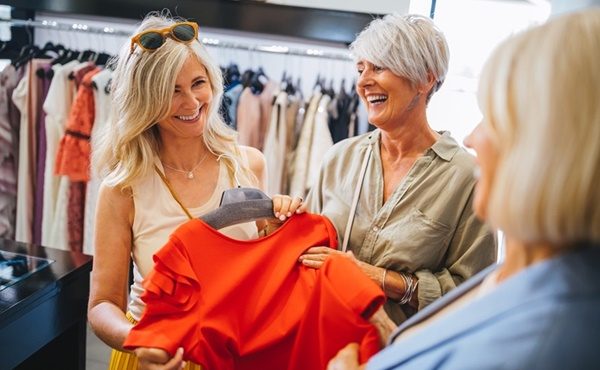Millennials may represent the customers of the future, but retailers need to concentrate on today’s customers to maximise sales revenue, and that means embracing the over 50s.
Senior shoppers have money to burn and are increasingly willing to spend it. More than two-thirds of the $2.3 trillion in household wealth generated in Australia in the first half of this decade went to those aged 55 or older, according to the Australian Bureau of Statistics.
Baby boomers are also more likely to invest in big-ticket items and less likely to opt for fast fashion, Raghav Sibal, managing director for Australia and New Zealand at supply chain software provider Manhattan Associates, says.
“The over 50s are potentially far more discerning and demanding in their retail habits,” he says. “While many are still wooed by social media and the quality of online experience to an extent, many still prefer to go into a store than shop online; they like the interaction and personal experience.”
Capturing and retaining this affluent generation will require in-depth understanding. Personalisation for this generation doesn’t mean asking for someone’s email address and spamming them; it is more about genuine customer service, support and helpful interactions with sales people.
“Over 50s are looking for a shopping experience that goes beyond the purchase,” says Sibal. “They are more likely to take up services like premium delivery and installation, and customer support via phone, and are willing to pay for it.”
Any retailer seeking to attract sales from over 50s shoppers should also consider the music it plays in-store, the volume and the general impression the retail space creates, he adds.
“If you want to encourage sales from this generation, make the space comfortable for them to enter.”
For a generation that is less willing to embrace self-service, a quality interaction with a sales person is key.
“Tech savvy over 50s will have typically started the buying journey online, especially for those big-ticket items. They will have a pretty good idea of what they want to buy but will also value the chance to look and feel in-store to determine product quality.”
They also want to enjoy the buying experience. According to recent research conducted by global business mobility and IoT solutions provider SOTI, 61 per cent of Australian consumers want to receive personalised customer service out of their in-store experience over other factors.
Technology can also help. Consumers no longer have the patience for cash registers, long queues and the lack of personalisation commonplace in retail of the past. The more targeted, knowledgeable and streamlined approach in today’s retailers could be exactly what over 50 shoppers are after.
This is where mobile point-of-sale (mPOS) devices come in.
“MPOS devices allow sales people to provide customers with a better retail experience, which leads to increased sales,” says Michael Dyson, managing director of Australia and New Zealand at SOTI.
Developments in mPOS device technology means that salespeople can have at-hand both up-to-date stock information, as well as offers and promotions, plus an inherent interest in the product area, says Sibal.
“Add in access to customer history, including recent purchases, and the foundation is laid for an excellent, personalised interaction where the sales person can upsell, and the over 50s customer has a great experience.”
By Caroline Riches
This article first appeared on retailbiz







